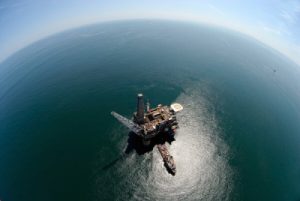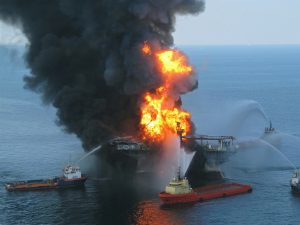Mexico’s Sureste Basin Returns To Super Basin Spotlight
From: Hartenergy / 6 April
HOUSTON—The flurry of bidding activity from oil and gas companies willing to shell out millions of dollars for drilling rights in the shallow waters of the Gulf of Mexico (GoM) during Mexico’s latest bidding round showed there must still be something special about the Sureste (Southeast) Basin.
“I’ve never seen a structure like it in my career,” Mark Shann, subsurface director for Sierra Oil and Gas, said of Sureste during the AAPG’s recent Global Super Basins Leadership conference.
The multiplay basin, which includes prolific sub-basins such as Sonda de Campeche and Chiapas-Tabasco, spans about 65,000 sq km and is believed to hold 50 billion barrels of recoverable oil in the GoM’s shallow water and beyond. Its oil-prone prowess gained prominence in 1976 with Mexico’s game-changing Cantarell oil field discovery. Since then the basin has served as the main hydrocarbon-bearing province for Mexico, which is working to reverse declining production with global players eagerly chomping at the bit in search of oil.
RELATED: Southeast Basin Lures Oil Companies To Mexico’s Shallow Water
The historic Zama discovery made in 2017 by a Talos Energy-led consortium that includes Sierra and Premier Oil and another discovery—Amoca—by Italy’s Eni in 2017 have kept the basin in the spotlight, indicating it still has more to give. The Zama well, the first well drilled by the private sector since Mexico opened its doors to foreign investors, hit 170 m to 200 m (558 ft to 656 ft) of net oil pay in Upper Miocene sandstones. Initial gross original oil in place estimates ranged from 1.4 billion barrels (Bbbl) to 2 Bbbl.
Some would call it the rebirth of a super basin.
Shann said the basin—along with neighboring Tampico-Misantla—has all the qualities of a super basin.
“If you’re going to go into a super basin, you need at least one fantastic source rock and it has to be a mature source rock,” Shann said. He added that multiple reservoirs are also needed. “Having multiple reservoirs takes away the dependency of one reservoir working out or not, and you need seals to hold back hydrocarbons in their reservoirs.”
Having a diversity of traps is fantastic, he added, noting other attributes also define a super basin. These include having a regulatory framework in which to make the entire business work and super data, something Shann said Sureste Basin has plenty.
“Four years ago when we started our company we couldn’t get all seismic data from the country. Today you can access all the seismic,” Shann said. “You can access any well that is older than two years, and there are 39,000 wells in the country. The ability mine data and therefore to compete on an equal level playing field is hugely important,” especially for a small company competing against supermajors.
Sierra has picked up 11,000 sq km of wide azimuth data from Schlumberger and source rock is visible, he said. “The super data has really helped to underpin a story of success in one of the world’s greatest super basins.”
Today Sierra is focused mainly on Sureste, which Shann said extends beyond shallow and into deepwater.
The company said on its website that Sureste’s original oil and gas in place is about 220 Bboe, and the fact that it has numerous mature fields—including Ku Maloob Zaap and Sihil—and little reinvestment signals “significant opportunity for growth.”
Its reservoirs are associated with structural, salt tectonics, stratigraphic and combined traps, and the main structural styles include normal faulting with rotated blocks (Late Miocene-Holocene), salt cored anticlines and salt rollers and diapirs (Jurassic-Late Cretaceous), according to Mexico’s National Hydrocarbons Commission.
In terms of source rock potential, Shann said “we’re definitely in a super basin.” He spoke about how the Zama discovery shed more light on source rock thickness. Taking into account a conservative 50% migration loss among other factors, the company was able to determine the source rock must be about 200 m thick.
Shann said the company and its partners’ plan to test the Jurassic next year.
“Sureste is one of those amazing salt-related basins,” he added, speaking highly of the carbonate potential of the basin in Mexican waters and on the U.S. side. “I think we can still find some big carbonate fields in the Campeche Slope.”
Located about 37 miles offshore, Zama is between Eni’s Amoca appraisal well in the Lower Pliocene and Pan American’s Hokchi 2 in the Middle Miocene.
“Between the three of us, we’re exploiting different parts of this basin, which helps the industry’s understanding of the whole basin,” Talos CEO Tim Duncan told Hart Energy’s Oil and Gas Investor last summer.
RELATED: Talos Energy CEO Talks About Historic Zama Well
Talos, which will merge with Stone Energy, said in its March 15 fourth-quarter earnings release that the company is in the appraisal planning stages for the Zama-1 discovery. Zama-1 is located in Block 7 of the Sureste Basin at a water depth of about 165 m.
Other exploration opportunities exist, according to Talos.
Talos holds a 35% participating interest with Sierra holding 40% and Premier, 25%.
From: Hartenergy / 6 April



